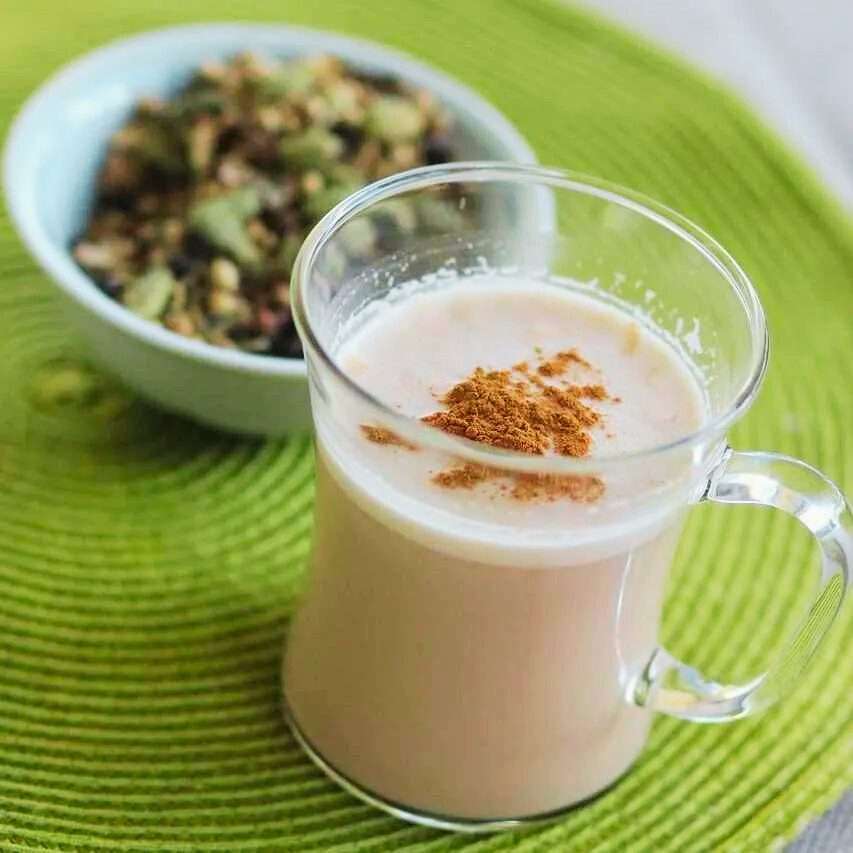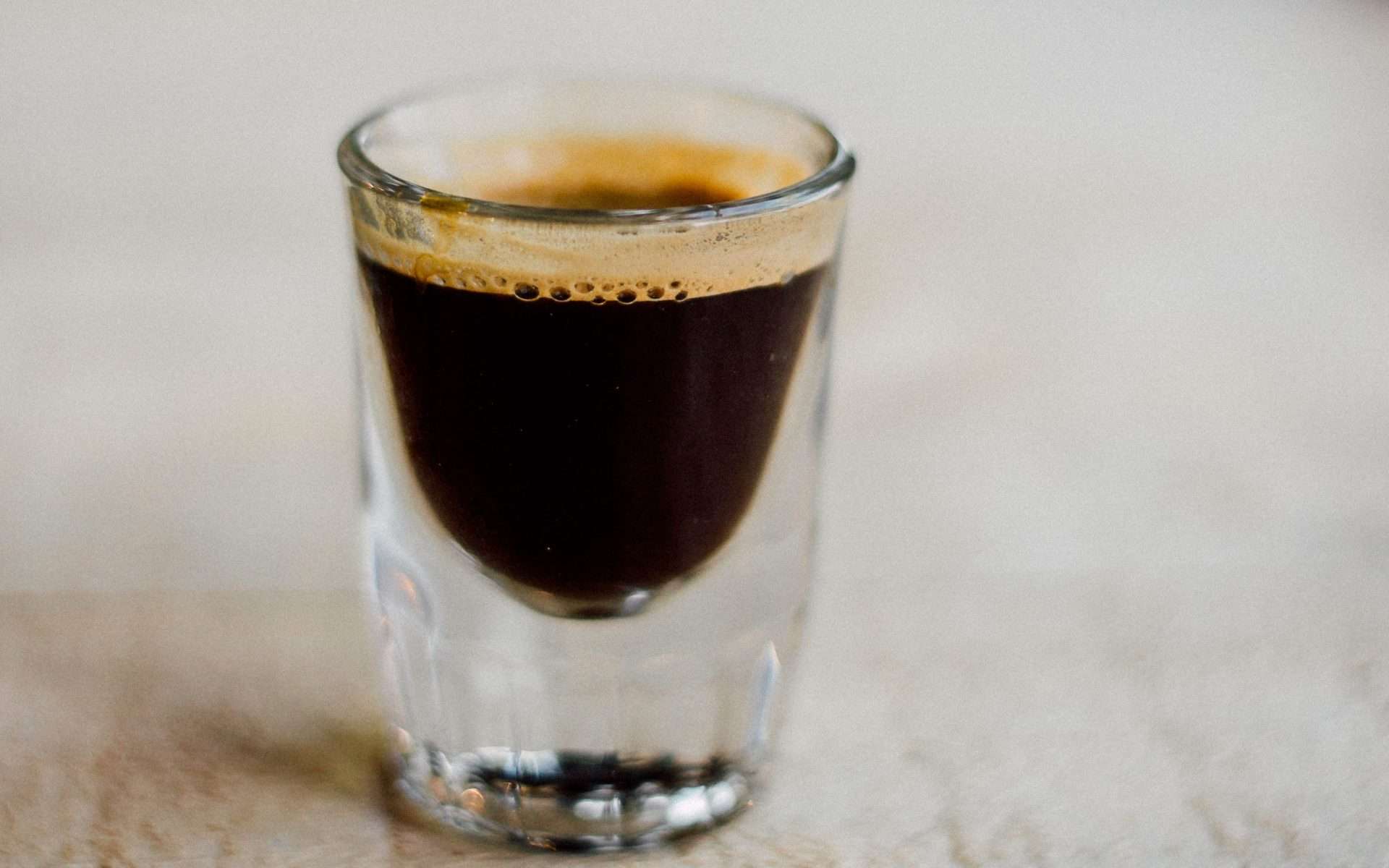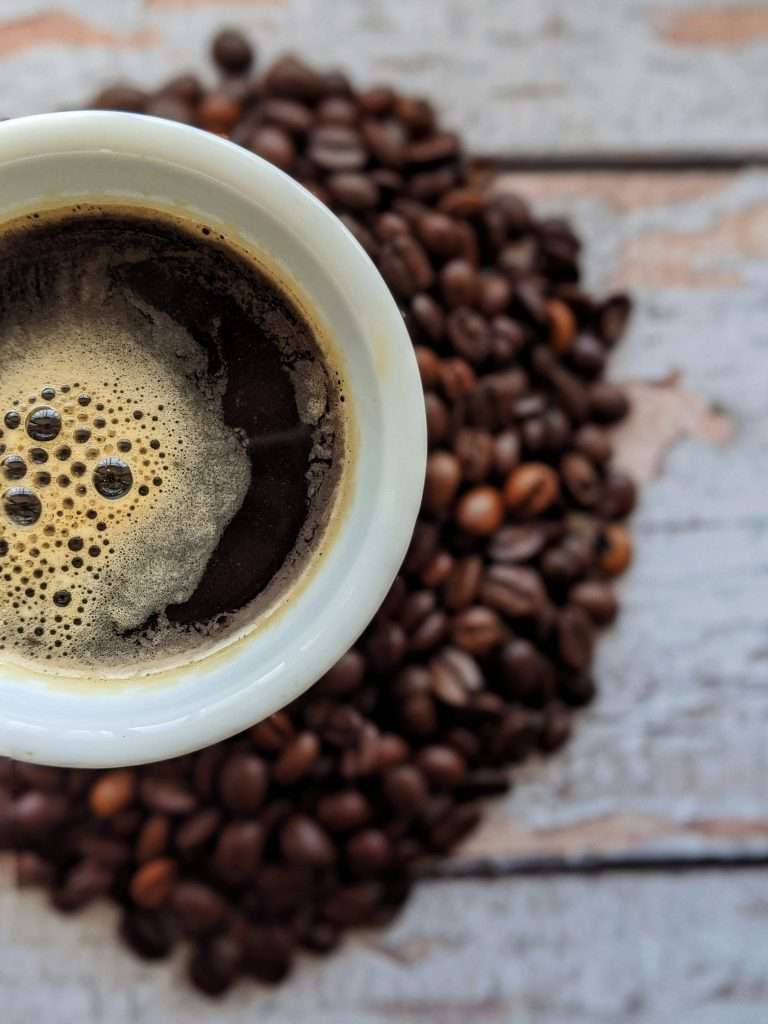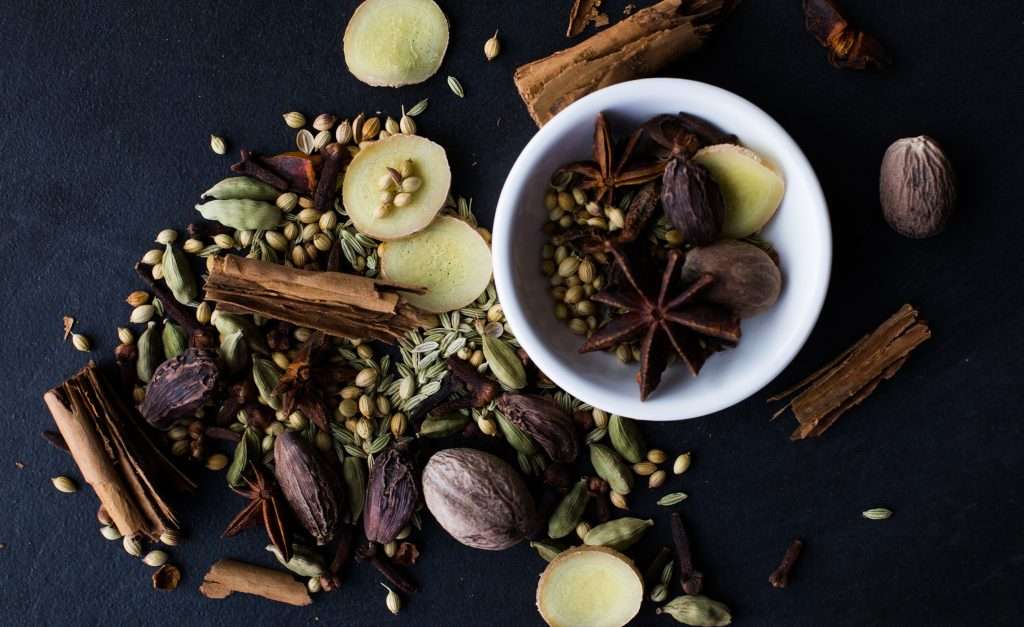In the Dirty Chai vs Chai Latte debate, “dirty chai” is an intriguing option for culinary adventurers. Making its way into both morning coffee shop conversations and online recipe searches, this drink represents a unique fusion of the traditional comfort of chai tea with the stimulating kick of espresso. But what exactly is this elusive drink, and how is it different from the conventional chai latte? What exactly does chai latte tea contain, and how is each of these variants prepared? “We will explore these questions and more in detail below, diving into the extraordinary world of chai and its contemporary variations.

What is Chai Latte?
Chai Latte is a drink that fuses hot milk with black tea and a set of spices, originating from the rich culture of India. This variant of the traditional Masala Chai is characterized by its perfect balance between aromatic spices such as cinnamon, cardamom, cloves, and ginger and the softness of milk, resulting in a warm and slightly spicy drink that is simultaneously comforting.
In India, Chai tea is not simply a drink but an essential element of everyday life, reflecting the union of Ayurvedic tradition and the British influence of tea. Each region of India brings its unique twist to the recipe, making Chai a versatile and hugely popular drink. The latte version of Chai, known globally, is usually creamier and smoother. It is often served with milk foam and sometimes sweetened, adapting to Western tastes and maintaining its exotic and spicy essence.
What is in a dirty chai?
Dirty chai is a distinctive drink that combines two worlds: tea and coffee. Essentially, it is a chai latte with a shot of espresso added. This mixture results in a drink with chai’s creaminess and spicy flavor, enriched with the intensity and depth of espresso coffee. So Why is dirty chai called dirty? The word “dirty” in this context refers to the change in the appearance of chai when espresso is added, giving it a darker, ‘dirtier’ tone.
Although it may seem like a contemporary creation, dirty chai results from constant evolution in the search for varied flavors and textures, Masala chai, a traditional Indian infusion that includes strong black tea blended with various aromatic spices and herbs, is combined with espresso to create a hybrid that satisfies both tea lovers and coffee enthusiasts. This crossing of cultures has resulted in a comforting and stimulating drink that offers a unique experience for the palate.
Dirty Chai Latte Vs Chai Latte. Differences
| Aspect | Chai Latte | Dirty Chai |
|---|---|---|
| Ingredients | Black tea, spices (cinnamon, cardamom, cloves, ginger), milk | Black tea, spices, milk, shot of espresso |
| Flavor | Smooth, spiced, creamy | Robust, spiced with notes of coffee |
| Caffeine (approx.) | 30-50 mg per cup | 80-120 mg per cup |
The fundamental difference between a Chai Latte and a Dirty Chai centers on incorporating espresso coffee in the Dirty Chai, which entails notable changes in flavor and caffeine content.
Chai Latte:
-Ingredients: It is prepared with a base of black tea and a mixture of traditional spices such as cinnamon, cardamom, cloves, and ginger, combined with hot and steamed milk.
– Flavor: The Chai Latte offers a flavor where species predominate, with warm and slightly spicy notes and a creamy texture thanks to the milk. Its flavor can be similar to a mild spicy infusion, with a sweet and comforting touch.
– Caffeine: Generally, a standard cup of Chai Latte can contain between 30 and 50 mg of caffeine, depending on the strength of the black tea used and the infusion time.
Dirty Chai:
-Ingredients: The Dirty Chai includes all the components of the Chai Latte, but a shot of espresso is added.
– Flavor: This addition of espresso provides a more robust and full-bodied flavor profile, comparable to that of a strong latte, but with the distinctive character of chai spices. The combination results in a balance between the coffee’s depth and the chai’s spicy flavor.
– Caffeine: The caffeine content in a Dirty Chai is considerably higher due to the espresso. One cup can contain around 80 to 120 mg of caffeine, adding the caffeine in black tea and espresso.
How to Make Chai Latte (Starbucks Style, Homemade)

| Quantity | Ingredient | Notes |
|---|---|---|
| 2 teaspoons | Black peppercorns | |
| 10 | Cloves | |
| 5 pods | Cardamom, open | |
| 2 | Star anise | |
| 1 stick | Cinnamon | |
| 30 g | Fresh ginger, peeled and sliced. | |
| 6 bags | Black tea | English Breakfast or Earl Grey |
| 1 liter | Water | |
| To taste | Milk |
Preparation of Chai Latte
| Step | Details |
|---|---|
| Difficulty | Easy |
| Total Time | 15 minutes |
| Preparation | 2 minutes |
| Cooking | 13 minutes |
1. Heat the spices over medium heat in a large saucepan for 2-3 minutes to enhance their flavor and aroma.
2. Add the water and chopped ginger. Bring the mixture to a boil.
3. Once it boils, add the black tea bags, reduce the heat to a minimum, turn it off, and let it infuse for 10 minutes with the saucepan covered.
4. After this time, strain the tea and discard the spices.
5. Serve the tea in four cups, filling up to ¾ of their capacity, and top each one with milk to taste. Serve immediately.
How to Make Dirty Chai Latte

To turn your Chai Latte Tea into a Dirty Chai Latte, follow the same preparation steps as the Chai Latte Tea. Then, add a shot of espresso or ½ cup of strong coffee to each cup before adding the milk. This addition transforms the drink, combining the spicy, comforting flavor of chai with the intensity and energy of coffee. Ideal for those who want an extra boost in their drink, the Dirty Chai Latte is a perfect fusion between the world of tea and coffee.
What has more caffeine, chai, or coffee?

Coffee contains significantly more caffeine than tea. On average, 100 ml of coffee has about 40 mg of caffeine, compared to 11 mg in the same amount of tea. This difference is due to the natural characteristics of coffee and tea plants and the processing methods applied to each.
The higher caffeine content in coffee makes it a preferred beverage for those seeking a more pronounced energy boost. In contrast, tea, with its lower caffeine content, is ideal for those seeking a stimulating but milder drink. Additionally, tea contains L-theanine, an amino acid that works in synergy with caffeine to provide a feeling of calm and focus without the agitation that sometimes accompanies coffee consumption. This unique combination in tea offers a more balanced and sustained ‘high’ compared to the quick spike and is often followed by a crash that coffee can produce.
For a deeper dive into the caffeine content in chai, especially for those curious about the specifics of a chai latte, consider exploring our in-depth article: How Much Caffeine is in a Chai Latte? Unveiling the Truth for Tea Lovers.
Variations
1. Pumpkin Chai Latte: This autumn variant combines the classic flavor of Chai Latte with pumpkin puree and spices such as nutmeg and cinnamon. It is ideal for lovers of seasonal flavors.
2. Dirty Chai Iced: Perfect for summer, this version adds espresso to the Chai Latte and is served cold with ice. It offers a refreshing and energizing mixture, ideal for hot days.
3. Vegan Chai Latte: Using almond, soy, or oat milk, this option is ideal for vegans or those looking for alternatives to traditional dairy. It maintains the spicy flavor of the Chai Latte but with a lighter and more sustainable touch.
Creating your mix

Tips
1. Experiment with confidence: Try different types of tea and spices. Don’t be afraid to mix and match to find your ideal flavor.
2. Maintain balance: A balance between sweetness and spice is crucial. Adjust the proportions to find the perfect harmony in your drink.
3. Choose the right coffee beans: Different coffee beans can change the flavor profile. For example, Arabica beans are milder, while Robusta offers more intensity.
Combinations to try
- Black Tea, Cardamom, and Whole Milk: A classic, where cardamom enhances the black tea.
- Green Tea, Ginger, and Almond Milk: A fresh and spicy mixture softened by almond milk.
- Oolong Tea, Cinnamon, and Soy Milk: A rich combination with nuances of cinnamon and the lightness of soy milk.
These combinations are just the beginning. Play with the flavors and find what you like best.
Potential health benefits
When analyzing the nutritional aspects of Chai Latte and Dirty Chai, it is essential to consider both the calorie content and health benefits of their ingredients. Although Chai Latte varies by recipe, it can contain calories from milk and added sugar. Chai spices provide antioxidant properties and may benefit digestion and inflammation.
On the other hand, Dirty Chai includes all of these features but with the addition of espresso, which slightly increases its caffeine and calorie content. However, coffee also provides antioxidants. The key is balance and moderation, especially with sugar and milk, to enjoy these benefits while maintaining a healthy nutritional profile.
Conclusion
In short, both the Chai Latte and Dirty Chai have something unique to offer. While the Chai Latte provides a warm and spicy experience, the Dirty Chai adds a refreshing kick with its espresso. Dare to experiment with both drinks to discover which best aligns with your tastes. Each has its magic, capable of transforming an ordinary moment into a unique experience. Happy brewing and enjoy your choice, whether a relaxing Chai Latte or an energizing Dirty Chai!
Frequently Ask Questions About Dirty Chai vs Chai Latte
1. What’s the difference between chai latte and chai tea?
Chai Latte is a creamy beverage made with spiced tea and milk, while Chai Tea focuses on the spiced tea aspect without milk.
2. does the chai tea latte have caffeine?
Yes, Chai Tea Latte contains caffeine, primarily from the black tea used in its preparation.
3. Is a dirty chai latte healthy?
While Dirty Chai Latte can have health benefits from spices and tea, it also contains caffeine and potentially sugar, depending on the recipe.
4. Why is it called dirty chai?
The term ‘dirty’ refers to adding espresso to Chai Latte, which changes its color and flavor profile.
5. Why is dirty chai so good?
Its popularity stems from the unique combination of spiced tea flavors with the robustness of coffee, offering a balanced and energizing drink.
